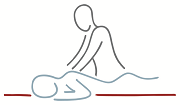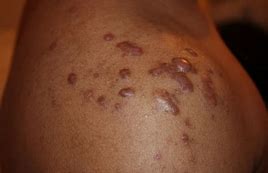Your skin type can affect several things – the visible signs of ageing, likelihood of developing acne, resistance to UV rays, and the rate at which scars heal. These are measured on the “Fitzpatrick” Scale. Skin types are grouped by your genetic predisposition to melanin, which is the chemical that provides pigmentation in skin. Dermatologists look at this scale to determine risk factors for anything from sunburn and skin cancer to scarring risks and hyperpigmentation. Darker skin tends to be thicker with a lower Ph and increased risk of abnormal scarring. Paler skins are more prone to sunburn and skin cancer.
There are many different types of scarring that can result when tissues are damaged. All types can benefit from Scarwork™ therapy although results will vary depending on maturity and size of area being treated.
Fine line scars –
An uncomplicated scar caused by surgery or a minor wound. Immature (new) scars will appear red and slightly raised. As they mature (over approx. 2 years) they will flatten and become paler.
Hypertrophic scars –
These scars result when excess collagen is produced by the body during healing. They remain within the boundary of the wound but are raised, red and sometimes itchy. These scars develop, grow and then shrink during the months after injury. They often mature to have an elevated, rope-like appearance.
Keloid scars –
These are also caused by an over production of collagen during healing but can continue to grow over many years. They do not shrink back to “normal” without treatment and extend outside of the borders of the original wound. Keloid scars often run in families and can result from minor wounds such as ear piercing and injections. They are more common in people with darker skins.
Atrophic scars –
These are usually caused by collagen destruction during an inflammatory condition such as acne or Chicken Pox. They have a sunken and pitted appearance. They can also occur from an injury that causes a loss of underlying fat.
Contractures –
These commonly occur from burn injuries and result in the skin shrinking and tightening as it heals. This type of scarring often causes a restriction in movement especially near joints.
If you have any other questions, please don’t hesitate to get in touch for a no-obligation chat.

